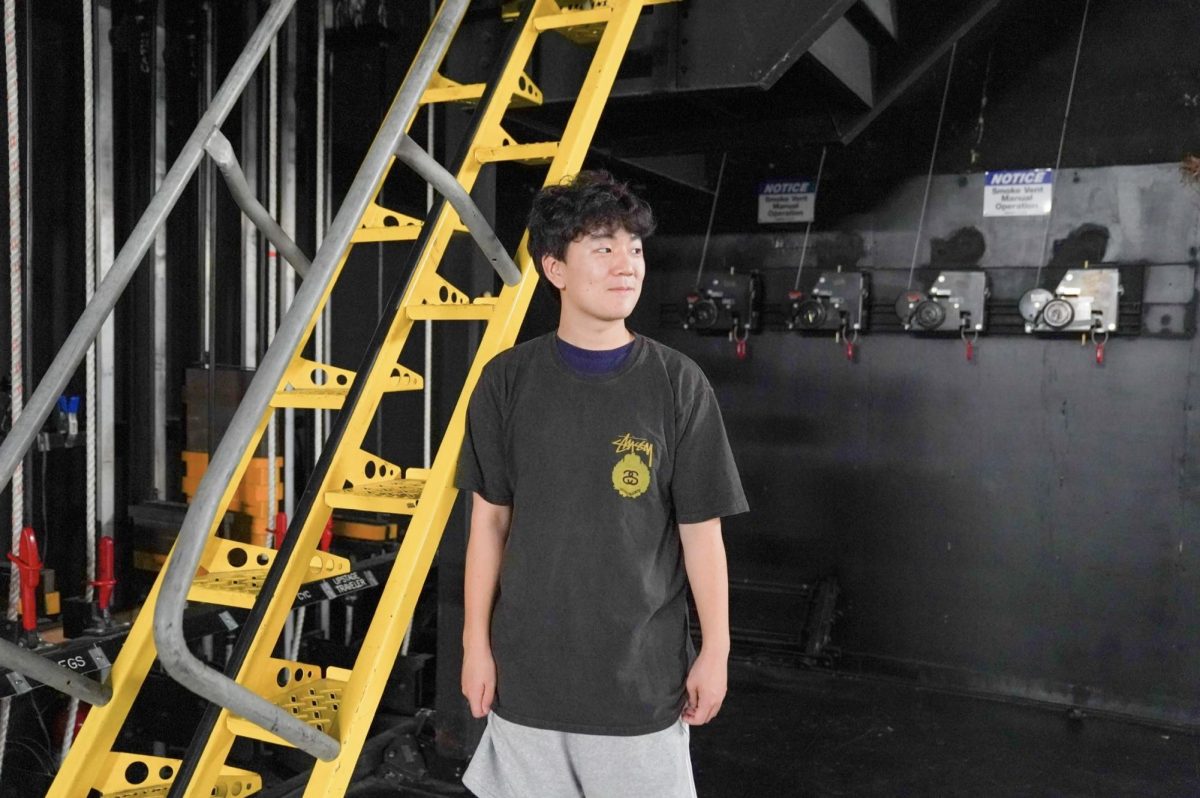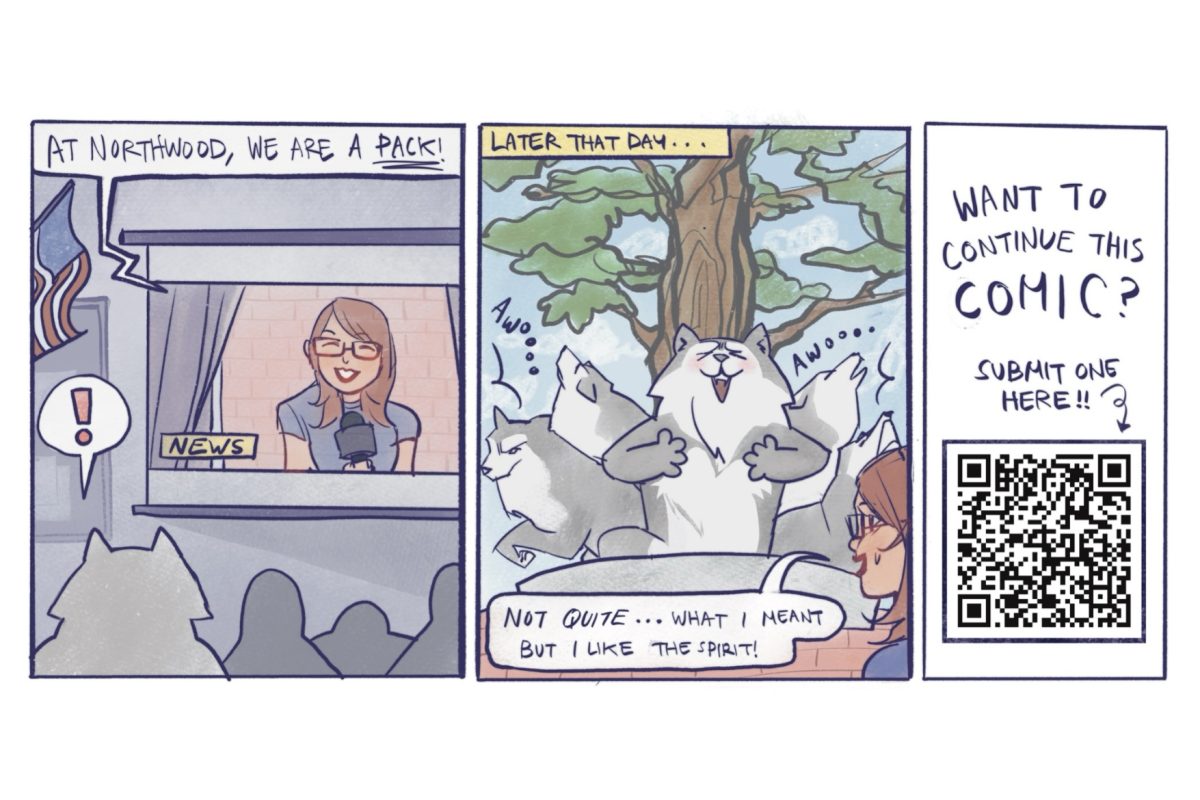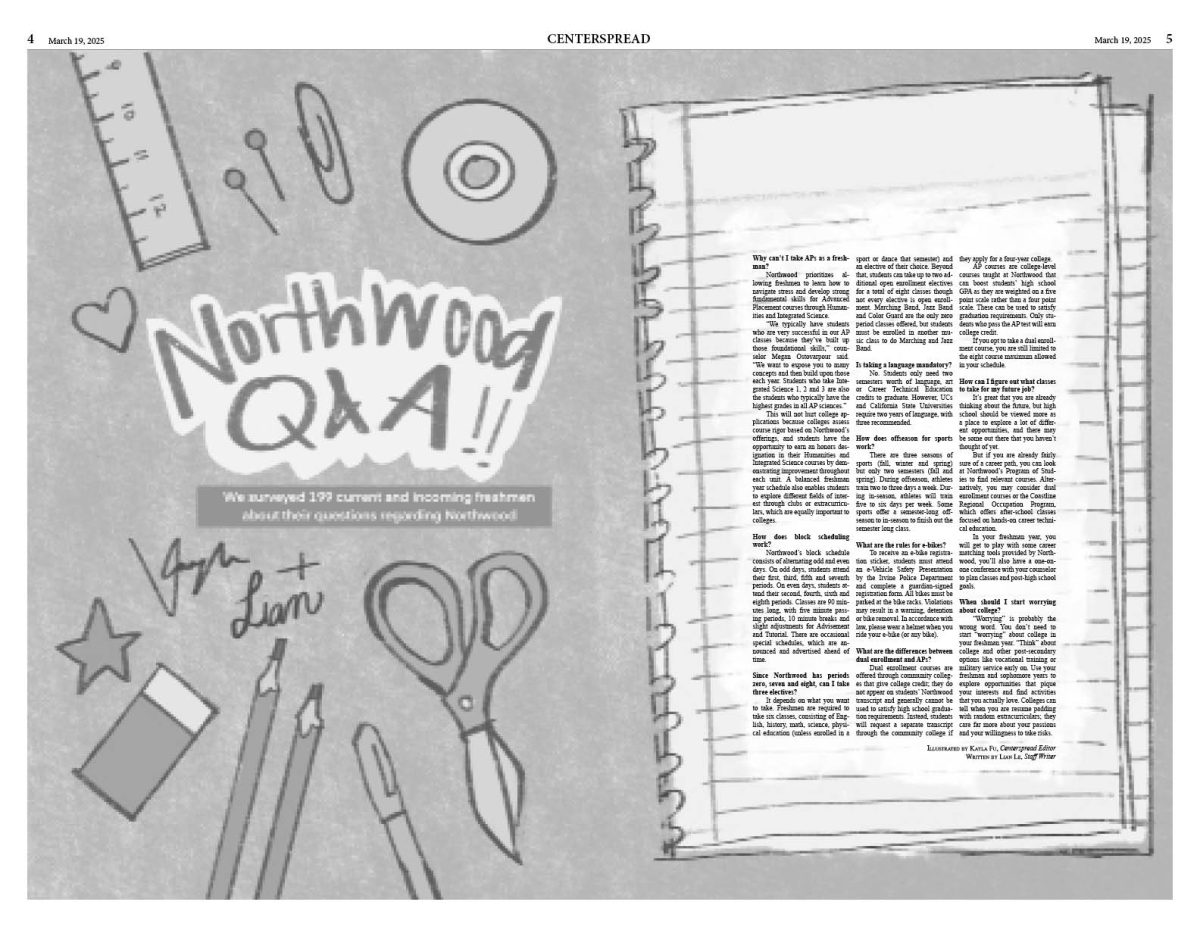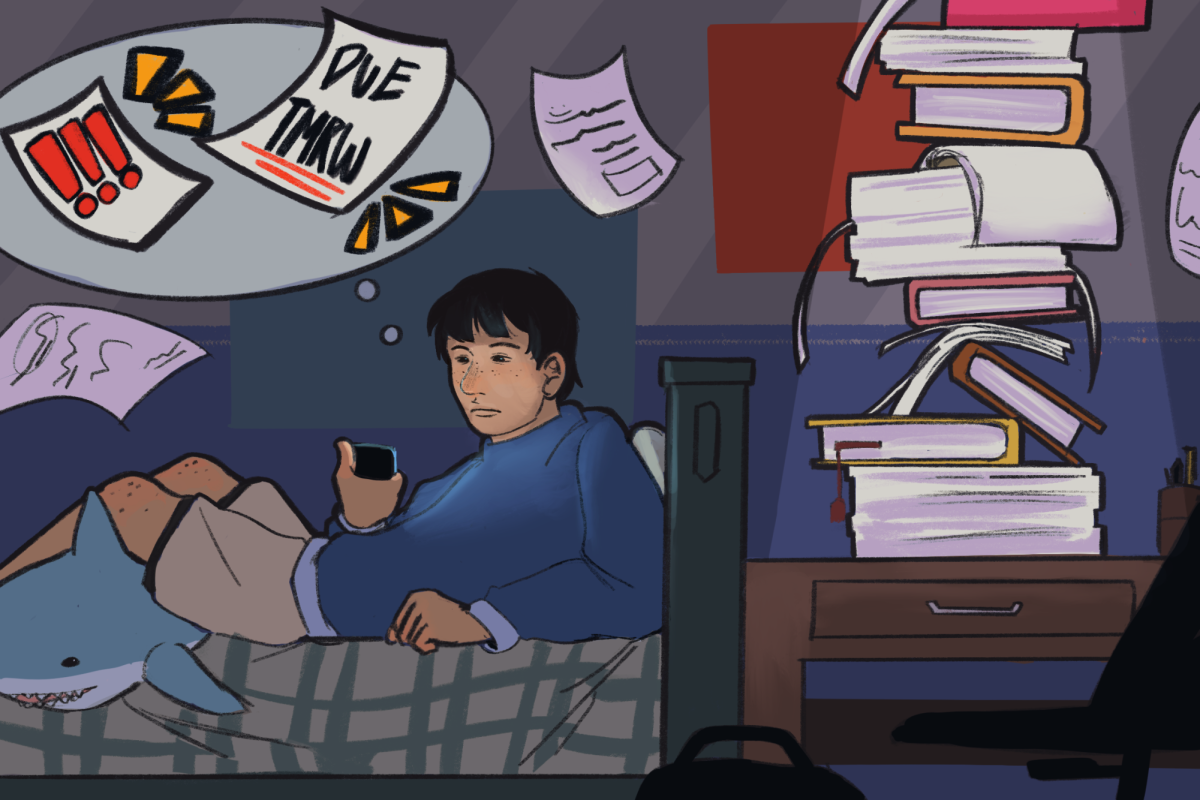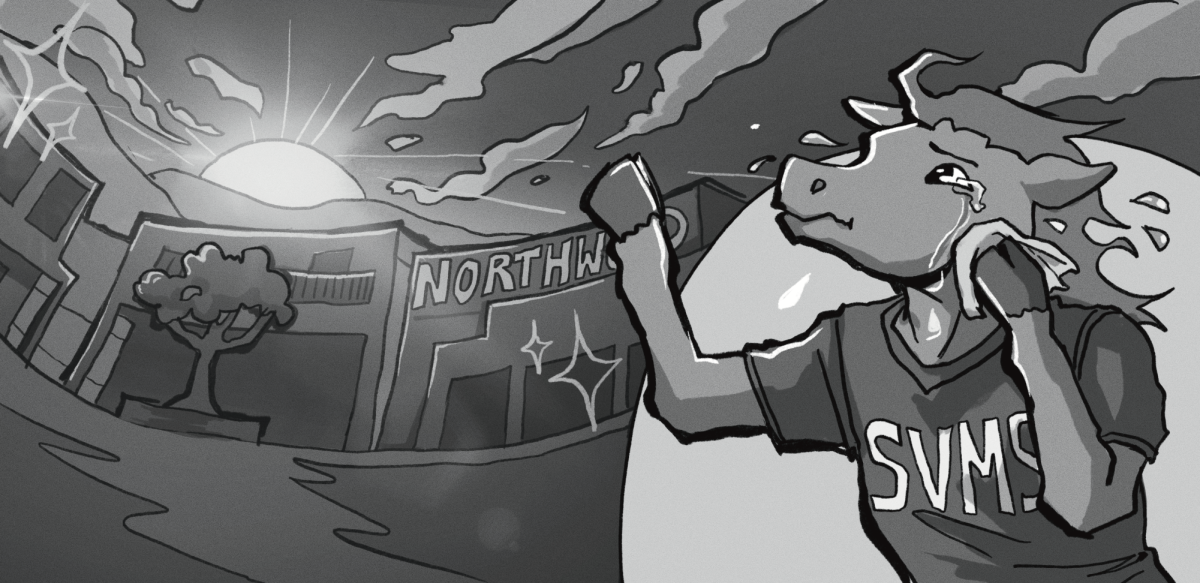In the last few months, the bee population at Northwood has noticeably increased. Many students may have wondered where these pollinators could have come from.
Swarms of bees can be found most prominently occupying trash cans near The Oak and by the Student Activities Center. Although honey bees are naturally docile unless disturbed, some aggression has been noticed recently.
“My friends would throw something away, and they would explode out of the trash can,” junior Meili Sierra said. “Even if we had no food, just sitting at the tables would cause them to come at us.”
There is no definite explanation for the surge in the population, but a possible factor could be the wet weather that Irvine has experienced in the last year and how it has affected the nearby groves that are natural habitats for hives.
“The rain that came in brought a lot more vegetation and fodder for all kinds of insects,” environmental science teacher Megan Stuart said. “As bee hives grow, they eventually get so big that they divide, and send out scout bees to find a new spot for them.”
Habitat loss may also be a contributor to the migration of the bees, as developments in nearby locations like Orchard Hills have led to the removal of trees and small ecosystems.
Although relocation is a normal occurrence after a growth in numbers, there are some concerns that Northwood’s facilities are not intended to house insects because they are student-populated areas.
“A better location for them would be out of the way of people,” Stuart said. “When the only new home they can find is on a school campus where we can’t really have them here, it’s a problem for the bees and for us.”
Administration does not currently have a plan for containing the bees. As of now, students should just continue to be mindful of their new neighbors and communicate to staff members if any complications arise. It is unknown if the bees will stay active throughout the winter, but they are likely to stick around campus if Irvine has a wet season.
Current predictions anticipate that Southern California will experience another El Niño, bringing unseasonably heavy rains this winter.

